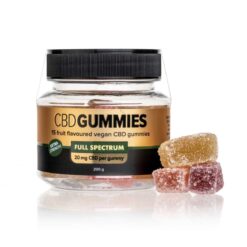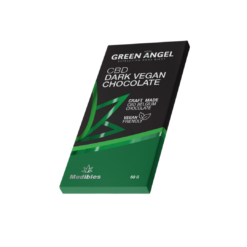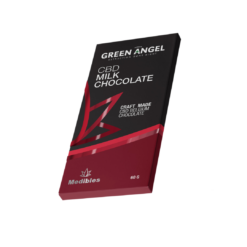Cannabidiol, also known as CBD, is a natural substance that can be found in hemp and cannabis plants. Even though we have only recently started to understand some of the properties and benefits of CBD, this cannabinoid has been around for thousands of years. Keep reading if you want to gain a better understanding of CBD, its history, and how it has impacted the cannabis world.
How Was Hemp Used In The Past?
Cannabis as we know it today can be differentiated into hundreds of different strains with unique colours, aromas, flavours, and potencies. However, this is all the product of human interaction and experimentation with cannabis.
CBD itself has a simpler origin – cannabis plants are indigenous to Central Asia, particularly the Indian subcontinent. Archeological records of its cultivation date back to around 10,000 to 12,000 years ago. Hemp was likely one of the first plants to be cultivated for textile fibres due to its strong and fibrous qualities.
Although hemp plants and using CBD are two different things, CBD usage was also recorded a few thousand years ago. The first documented case of using cannabis-derived medicine is by Chinese Emperor Sheng Nung, who drank cannabis-infused tea.
The Discovery Of CBD
We have only really been able to understand the properties of CBD over the past few decades, starting in 1940 when Roger Adams isolated CBD and cannabinol (CBN) from a cannabis sativa plant. After using various extraction techniques, he analysed the chemical structure of the isolated CBD compounds and determined that it was in fact non-intoxicating.
Raphael Mechoulam was the first to synthesise CBD successfully in 1963. This was a big step forward in the field of cannabinoid research as it provided researchers with a pure, reliable source of CBD, eliminating the impurities and variability that may occur when using plant-derived extracts. Mechoulam’s research on cannabinoids and CBD gave us a better understanding of how the body interacts with different cannabinoids.
Further Research Into CBD
There was a big resurgence of scientific research and interest in terms of CBD in the 1980s and 1990s. Most of this agreed with earlier advancements and discoveries in the field of CBD research, focusing on the benefits of CBD in particular. Some of the important discoveries made during this period include:
- 1988: The discovery of a cannabinoid receptor (CB1) which proved that the body produces cannabinoids naturally.
- 1992: The discovery of anandamide and 2-AG, two major cannabinoids that the body produces.
- Identifying the endocannabinoid system (ECS) within the human body.
CBD Becomes Part Of The Mainstream Market
Although significant research was occurring in the cannabis sphere, especially discovering the connection between CBD and the ECS, the social stigma surrounding cannabis did not allow for much progress to be made. However, in the mid-2000s, an infant in Colorado called Charlotte Figi caused a major shift, acting as a striking example of how beneficial cannabis can be.
Suffering from Dravet syndrome, an intense epileptic disorder that only affects children, Charlotte’s parents had tried each conventional and experimental treatment option there was. Finally, they turned to a high-CBD, low-THC cannabis grower, using the buds to make a cannabis-infused oil.
After giving Charlotte consistent doses of their cannabis oil, she went from having 300 seizures a week to having less than 5 a month. Charlotte’s story made many see cannabis in a new light, especially CDB, bringing its healing properties out for the public. Eventually, a highly purified CBD-based drug with the name Epidiolex hit the market to manage symptoms of Dravet syndrome.
What Does CBD Do: What We Know Now
Although we still do not know exactly how CBD works, it has something to do with activating or blocking cannabinoid receptors CB1 and CB2. As part of the endocannabinoid system, these receptors regulate a number of bodily processes, including sleep, appetite, and mood.
CBD may also have the ability to interact with certain opioid and serotonin receptors, stimulating processes that can decrease blood sugar and cholesterol levels. It may also affect gamma activity in peroxisome proliferator-activated receptors, which affects intracellular calcium release. This is responsible for a number of processes, including hormone secretion, muscle contraction, and cell growth.
What Are The Benefits Of CBD?
As seen in Charlotte’s case, CBD has many therapeutic properties. Some of the many health benefits of CBD that we know of today include:
- Relieving chronic pain
- Alleviating symptoms of depression
- Easing symptoms of anxiety
- Reducing inflammation
- Managing symptoms of mood disorders
- Reducing frequency of seizures
- Alleviating insomnia
- Relieving arthritis
- Managing symptoms of PTSD
- Antioxidant properties
- Reducing symptoms of Alzheimers
- Alleviating side-effects of chemotherapy
Modern Uses Of CBD: Popular CBD Products
As CBD has increased in popularity, a variety of consumption methods have been brought to the market. Each has its own benefits, and which one you choose will ultimately depend on your personal preference:
- Oils and tinctures: Bottles of CBD oil and tinctures are usually meant to be administered sublingually (under the tongue). This typically allows the consumer to feel the effects more quickly. The inclusion of a dropper also gives the user an easy and accurate dosing tool.
- Edibles: CBD edibles come in a variety of forms that are sure to suit any user’s taste. From gummies and sweets to brownies and cookies to beverages and meals, users can enjoy a precise dose of CBD. Edibles take anywhere from 20 minutes to 2 hours to kick in since they need to move through your digestive system, and their effects are also long-lasting.
- Capsules: Much like edibles, CBD capsules also move through the digestive system and take a while to activate. Having one dose in an easy-to-swallow capsule is very convenient.
- Vaping or smoking: You can get pre-filled vapes with CBD oil, or you can get reusable cannabis vaporizers for hemp flower and CBD concentrates, or use CBD e-liquids with a regular vaping device. Vaping is a safer CBD consumption method than smoking dried hemp flower as it removes the byproducts of combustion. The effects are usually immediate, although it is difficult to know exactly how much you are dosing.
- Topicals: Those who struggle with targeted pain and skin conditions can benefit from CBD lotions, creams, ointments, and other topicals.
CBD has a rich history and we have come a long way in appreciating all its benefits. Although we still do not know everything there is to know about CBD, groundbreaking scientists like Roger Adams and Raphael Mechoulam have helped us to understand that it is a unique compound that can benefit many groups of people. Remember to start with a low CBD dosage and wait long enough before taking more if you are a beginner, and enjoy the medical wonders of cannabidiol.
The post The History Of CBD appeared first on Vaperite.










